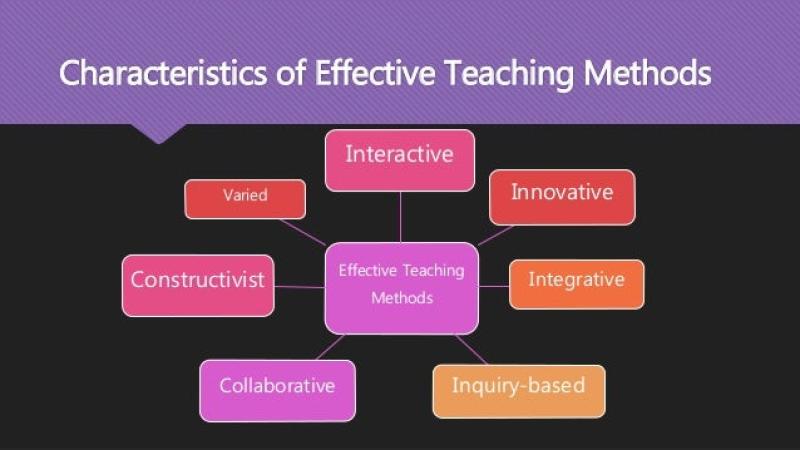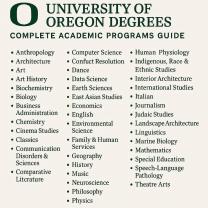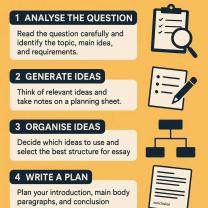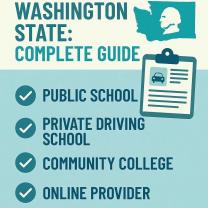What are the most effective teaching strategies?
Effective teaching strategies vary depending on the subject matter, the age group of students, and the learning objectives. However, several instructional approaches have been found to be generally effective across different contexts. Here are some key teaching strategies that educators often find impactful:
Differentiated Instruction:
- Definition: Tailoring instruction to meet the diverse needs of students by adjusting content, process, and product based on individual learning styles, interests, and readiness.
- Impact: Helps address varying learning paces and preferences, fostering a more inclusive and engaging learning environment.
Active Learning:
- Definition: Engaging students in hands-on activities, discussions, and problem-solving exercises to promote critical thinking and deeper understanding.
- Impact: Encourages student participation, enhances retention, and develops problem-solving and communication skills.
Collaborative Learning:
- Definition: Group activities or projects where students work together to achieve a common goal, fostering teamwork and shared learning experiences.
- Impact: Promotes social interaction, communication skills, and a sense of community within the classroom.
Inquiry-Based Learning:
- Definition: Encouraging students to ask questions, explore topics, and solve problems on their own, promoting curiosity and self-directed learning.
- Impact: Enhances critical thinking skills, curiosity, and a sense of ownership over the learning process.
Technology Integration:
- Definition: Incorporating technology tools and resources to enhance instruction, engage students, and facilitate interactive learning experiences.
- Impact: Increases student motivation, provides access to diverse learning resources, and prepares students for the digital age.
Formative Assessment:
- Definition: Ongoing assessments conducted during the learning process to provide feedback to both teachers and students, helping guide instruction and monitor progress.
- Impact: Enables real-time adjustments to teaching methods, identifies areas of improvement, and supports personalized learning.
Socratic Questioning:
- Definition: Engaging students in open-ended questioning to stimulate critical thinking, analysis, and discussion.
- Impact: Encourages deeper understanding, independent thought, and the development of analytical skills.
Visual Aids and Multimedia:
- Definition: Using visual tools, graphics, videos, and other multimedia elements to enhance understanding and retention of information.
- Impact: Appeals to different learning styles, reinforces concepts, and makes lessons more engaging.
Feedback and Reflection:
- Definition: Providing constructive feedback to students on their performance and encouraging reflection on their learning experiences.
- Impact: Supports continuous improvement, helps students understand strengths and weaknesses, and fosters a growth mindset.
Real-World Connections:
- Definition: Relating lesson content to real-world scenarios, applications, and experiences to make learning more relevant and meaningful.
- Impact: Enhances student interest, motivation, and the ability to transfer knowledge to practical situations.
Remember that effective teaching involves a combination of these strategies, tailored to the specific needs and characteristics of the students and subject matter. The best teachers often use a variety of approaches to create dynamic and engaging learning environments.
What teaching strategies have proven to be the most impactful and efficient?
The Most Effective and Efficient Teaching Strategies
1. Explicit Instruction
Explicit instruction is a teaching strategy that provides students with clear and concise instruction on a specific skill or concept. It is often used to teach basic skills or concepts, such as math facts or grammar rules.
Benefits:
- Provides a clear and structured learning experience
- Helps students acquire basic knowledge and skills quickly
- Reduces cognitive load for students
2. Cooperative Learning
Cooperative learning is a teaching strategy that involves students working together in small groups to complete tasks or solve problems. It is often used to promote collaboration, communication, and critical thinking skills.
Benefits:
- Encourages active participation and engagement
- Provides opportunities for students to learn from each other
- Promotes critical thinking and problem-solving skills
3. Differentiated Instruction
Differentiated instruction is a teaching strategy that tailors instruction to meet the diverse needs of all students in the classroom. This may include providing different levels of support, using different teaching methods, or offering different learning activities.
Benefits:
- Ensures that all students are challenged and supported at their own level
- Reduces learning gaps and promotes equity
- Increases student engagement and motivation
4. Metacognition
Metacognition is a teaching strategy that helps students develop their understanding of their own learning processes. This includes teaching students how to think about their thinking, monitor their progress, and set goals for themselves.
Benefits:
- Promotes independent learning and self-regulation
- Helps students become more effective learners
- Increases student motivation and engagement
5. Feedback
Feedback is essential for helping students improve their learning. It is important to provide timely, specific, and actionable feedback.
Benefits:
- Helps students identify areas for improvement
- Provides students with guidance on how to improve their performance
- Motivates students to continue learning and striving for excellence
6. Project-Based Learning
Project-based learning is a teaching strategy that involves students working on extended projects that require them to apply their knowledge and skills to solve real-world problems.
Benefits:
- Provides students with authentic learning experiences
- Promotes deep understanding of concepts and skills
- Encourages creativity, innovation, and problem-solving
7. Technology Integration
Technology integration can enhance student engagement, personalize learning, and provide access to new resources and tools.
Benefits:
- Increases student engagement and motivation
- Provides access to new learning resources and tools
- Personalizes learning experiences
8. Inquiry-Based Learning
Inquiry-based learning is a teaching strategy that involves students asking questions, conducting investigations, and drawing their own conclusions.
Benefits:
- Encourages students to become active learners
- Promotes critical thinking and problem-solving skills
- Develops students' research and inquiry skills
9. Gamification
Gamification is a teaching strategy that uses game-like elements in instruction to increase student engagement and motivation.
Benefits:
- Increases student engagement and motivation
- Promotes fun and interactive learning experiences
- Helps students apply knowledge and skills in a game-based context
10. Social and Emotional Learning (SEL)
Social and emotional learning (SEL) is a teaching strategy that involves teaching students the social and emotional skills they need to succeed in school and life.
Benefits:
- Improves student social and emotional well-being
- Reduces behavioral problems and promotes positive classroom climate
- Increases student engagement and learning outcomes
It is important to note that the effectiveness of any teaching strategy will depend on the specific context and the needs of the students. Teachers should use a variety of strategies and constantly reflect on their practice to ensure that they are using the most effective methods for their students.













